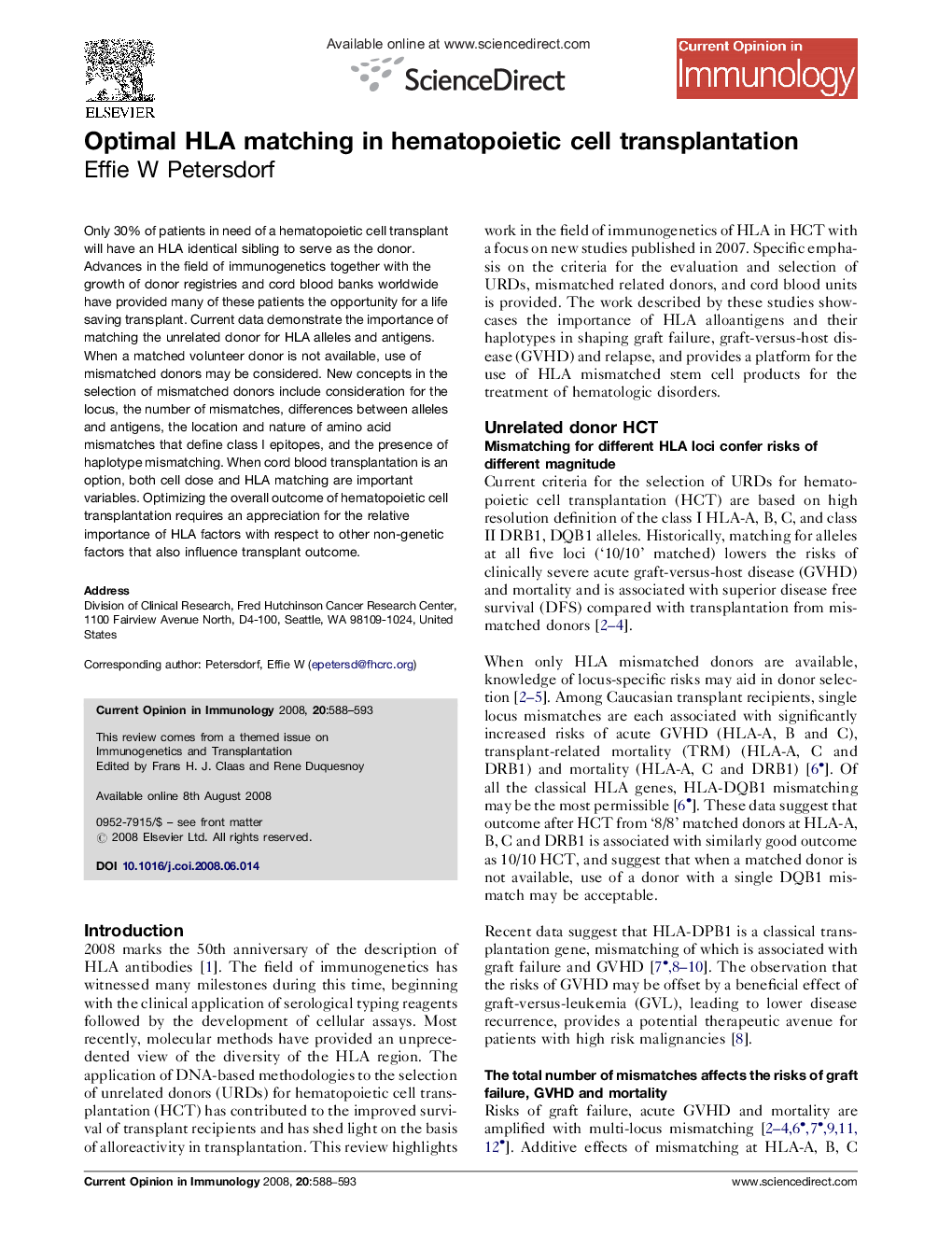| Article ID | Journal | Published Year | Pages | File Type |
|---|---|---|---|---|
| 3346378 | Current Opinion in Immunology | 2008 | 6 Pages |
Only 30% of patients in need of a hematopoietic cell transplant will have an HLA identical sibling to serve as the donor. Advances in the field of immunogenetics together with the growth of donor registries and cord blood banks worldwide have provided many of these patients the opportunity for a life saving transplant. Current data demonstrate the importance of matching the unrelated donor for HLA alleles and antigens. When a matched volunteer donor is not available, use of mismatched donors may be considered. New concepts in the selection of mismatched donors include consideration for the locus, the number of mismatches, differences between alleles and antigens, the location and nature of amino acid mismatches that define class I epitopes, and the presence of haplotype mismatching. When cord blood transplantation is an option, both cell dose and HLA matching are important variables. Optimizing the overall outcome of hematopoietic cell transplantation requires an appreciation for the relative importance of HLA factors with respect to other non-genetic factors that also influence transplant outcome.
